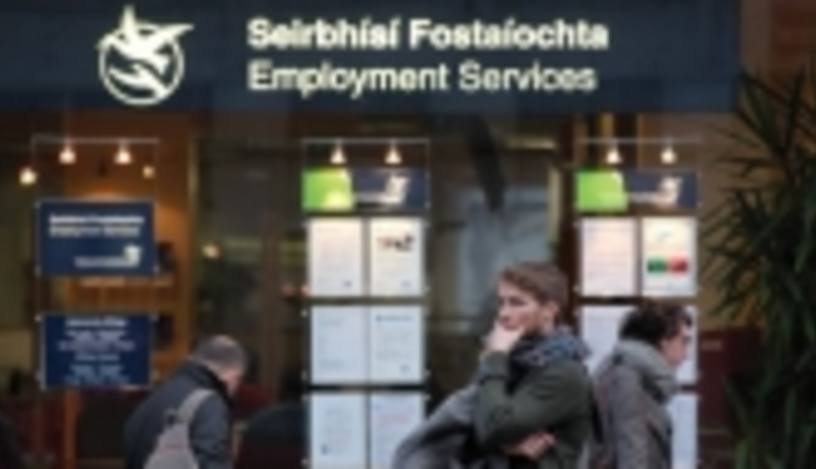The arrival of 2014 heralded more than just the start of a new year for Ireland and its banking industry. The doom and gloom of the financial crisis were finally replaced by a welcome optimism after the country left behind its programme of international financial support and regained its independence. But although there is much for the country to be proud of, there is little time for celebration as fresh challenges come thick and fast for Ireland’s banking sector.
Memories of the financial rescue still seem like an open wound for many in Ireland. The country took on €67.5bn of external funding from the EU, the International Monetary Fund and several bilateral lenders. To this, Ireland added €17.5bn of its own funding from its Treasury cash buffer and the National Pensions Reserve Fund.
Under the funding programme, Ireland committed to a range of sweeping reforms, including fiscal targets and reform of the financial sector. But unlike Greece, where reform caused regular riots on the streets of Athens, the Irish government swiftly went about its business and finally emerged from the programme on December 15, 2013, to much fanfare and admiration. The confidence of the Irish government was emphasised by the decision to exit the programme without a prearranged precautionary credit facility. The economy is now expected to grow by about 2% in the coming year, putting the country back on a relatively stable path.
Government ownership
The legacy of the crisis persists, however, most obviously through the country’s ownership of large chunks of the banking sector. The government still controls just under 14% of ordinary shares in Bank of Ireland, a 99.8% share in Allied Irish Bank and a 99.2% stake in Permanent TSB. It is hard to judge what plans the Irish government has for these assets, but some sort of sale is not out of the question.
The government’s 14% stake in Bank of Ireland has steadily risen in value over the past year, raising the question of when the right time would be to offload the shares. But it is understood that this is unlikely in the short term and more likely after the European Central Bank’s (ECB's) asset quality review, which is due to conclude towards the end of this year.
Away from the political machinations of the Irish government and its partners, the lending environment is one of the most important factors in how the banking system will be judged by the general population. Reports in the Irish press at the beginning of January noted Bank of Ireland was preparing to release €33bn of new lending into the economy by the end of 2017, suggesting an easing in some quarters of the tight conditions of the past and a welcome injection of liquidity.
“We are beginning to see an improvement in the lending environment,” says Brian Hayes, minister of state at the Department of Finance. “It is picking up, but it has been slow given the scale of the crash and the restructuring, but I think we are beginning to make progress because we have set very firm targets. The problem is it’s a kind of chicken-and-egg situation. [The banks] claim they are providing credit, but it’s not being drawn down.”
Credit review
Mr Hayes highlights the establishment of Ireland’s Credit Review Office as an important tool for people who have been refused credit from banks to possibly gain some sort of redress. According to the Credit Review Office website, the body was established to review decisions where credit applications for sole traders and small and medium-sized enterprises, including farm enterprises, were refused by banks. The Credit Review Office will then carry out an independent review for the person applying for the funds.
But according to Mr Hayes, the big priority for the government and the Irish banks now is to hit the targets set by the ECB on mortgage impairment. “We now feel we have the legislation in place,” says Mr Hayes. “If the banks don’t play ball, the person involved can go down the insolvency route and it might not be so beneficial for the bank.”
The encouraging trend in the Irish jobs markets is another factor that could be positive for the lending environment in 2014, according to a source within the European Commission with knowledge of Ireland. “Employment data has been very good starting in the second half of last year,” says the source. “This is hard data that shows that companies have started hiring again. Everything points to a continuation of this trend. And the mortgage market is improving. There is growing demand in Dublin for new houses.”
Capital raising
Confidence in the recovery of the Irish banking sector was compounded when Bank of Ireland announced on January 8 it had raised €750m of five-year unsecured funding through a euro fixed-rate transaction.
“Today's transaction strongly underlines Bank of Ireland's ongoing ability to access capital markets at improving prices since returning to the public bond markets with a range of covered bond trades, as well as senior and subordinated debt issuance over the past 14 months,” Bank of Ireland says in a statement.
This was accompanied by the Irish government raising €3.75bn through the National Treasury Management Agency with the syndicated sale of a new benchmark Treasury Bond, which will mature in March 2024. The funds were raised at a yield of 3.543%, with 17% taken up by domestic investors and 83% by overseas investors. The overseas investors were mainly from the UK (26%), the Nordic region (15%), Germany, Austria and Switzerland (14%), and the US and Canada (14%). These successful issuances have buoyed the government and encouraged optimism in the ability of Irish banks and other companies to raise money in international markets.
Mr Hayes believes “now is the time” for further bond issuances in the country and thinks that more can be expected in 2014 to add to the successful sales from the start of the year. “I think there’s a lot of interest in Ireland,” he says. “[It’s] proof the government’s approach was the right approach. If the Irish economy is coming back, there’s no reason to believe the banks won’t come back with it. It’s really important that we have a competitive banking sector.”
The source within the European Commission agrees that it is a good time to consider raising capital in the bond markets, taking advantage of the positive sentiment that has been missing in previous years. “It could be that all the banks try to take advantage of the good market conditions,” says the source. “That’s something we are likely to see for all the banks. Ireland from an international perspective is small. It’s not something that some big investors have on their mind. That said, we were in contact with investors and their sense is quite positive. They don’t see any major problems going forward.”
Comprehensive assessment
Arguably the biggest issue on the agenda for the Irish banking industry this year is the ECB’s comprehensive assessment, which is an EU-wide review of the area’s largest banks, designed to test the robustness of their balance sheets. The ECB started the 12-month assessment along with the participation of the member countries back in November 2013 and it is due to take a year to complete.
The assessment consists of three elements: a supervisory risk assessment to review, quantitatively and qualitatively, key risks, including liquidity, leverage and funding; an asset quality review to enhance the transparency of bank exposures by reviewing the quality of banks’ assets, including the adequacy of asset and collateral valuation and related provisions; and a stress-test to examine the resilience of banks’ balance sheets to stress scenarios.
Mr Hayes cuts a relaxed figure when discussing the prospects of the Irish banks in the assessment, but the duration of the process is not something he is keen to see dragged out. “I don’t think we have a lot to be concerned about,” he says. “I think we would have spotted any holes by now. I think the sooner we can do these the better. I think the banks are prepared for this. The stress-test has to be rigorous. The time is more of a problem than the test itself.”
But the European Commission source expresses more caution over the prospect of a comprehensive assessment for Irish banks. Although he believes there won’t be any surprises in the asset quality review, the stress-test could be a different story. “For the stress-test, it’s a forward-looking test,” he says. “This has not been done and it’s difficult to judge what the outcome will be. We need to know the parameters first. Our current assessment is the Irish banks will be fine, but this is a very rough judgement.”
ECB supervision
The comprehensive assessment is being conducted ahead of the ECB taking over banking supervision in late 2014. The so-called single supervisory mechanism will see the ECB working alongside member countries in financial supervision. According to the ECB, the aims of the initiative are to ensure the safety and soundness of the European banking system and to increase financial integration and stability in Europe. The ECB is expected to supervise roughly 130 credit institutions – almost 85% of total banking assets in the euro area.
Mr Hayes welcomes the new supervisory regime as a positive step and views it in the context of the wider European project as something of a necessity. “I think the whole objective of the supervisory mechanism is to give confidence to the economy post-crash,” he says. “The new foundation stones must be built on proper supervision. You can’t have a single currency and a single market without [this] supervision.”
Alongside the more immediate concerns of the comprehensive assessment and the introduction of a new supervisory regime, banks will also be keeping one eye on the creeping deadlines involved in the Basel III reforms.
The Basel III reforms are a set of internationally agreed measures to strengthen the regulation, supervision and risk management of the banking sector. The various measures are being phased in over the coming years and are due for completion by 2019. The main measures contained within Basel III include a leverage ratio and a minimum common equity capital ratio, among other things.
While this may seem far off for the Irish banking system, the overlapping phases of the reforms mean that progress towards the final goal must constantly be made to comply with the timescale and ensure Ireland meets its international commitments.
To some of the countries still mired in problems around the EU, the Irish story could be one that is looked upon with envy. It is hard to draw positives from the misery heaped on the country after the crisis, but Ireland and its banks have stood out among those worst affected for their willingness to set things right in such a short time and the manner in which they achieved their aims.
The lending environment appears to be easing, providing the all-important grease for the economy’s wheels. Fiscal responsibility and reforms at the country level have created an environment where banks can again look to raise large amounts of capital on international markets. And the focus on creating banks with robust balance sheets seems to have prepared them well to meet the standards of the international community, whether from Frankfurt or Basel.












